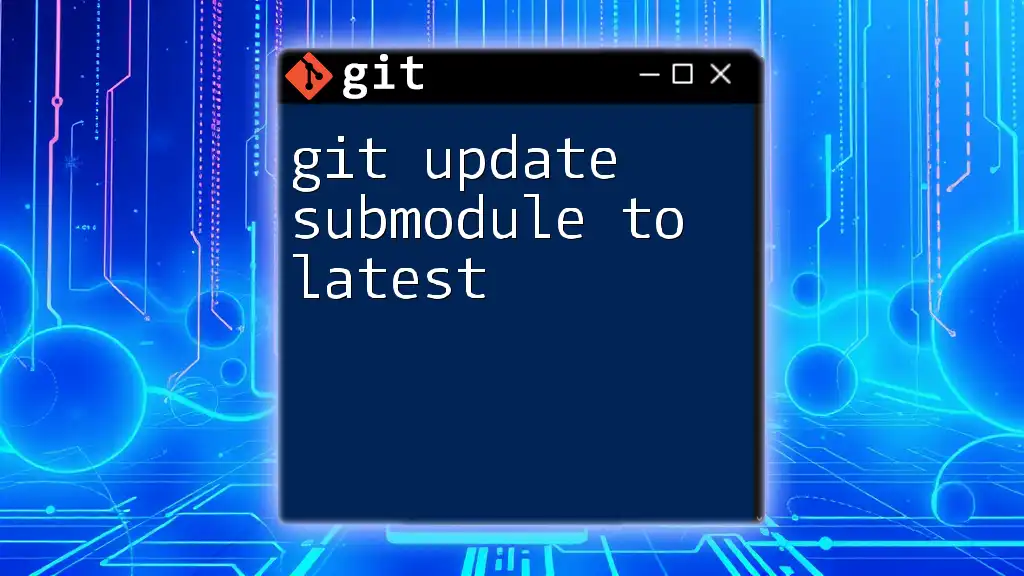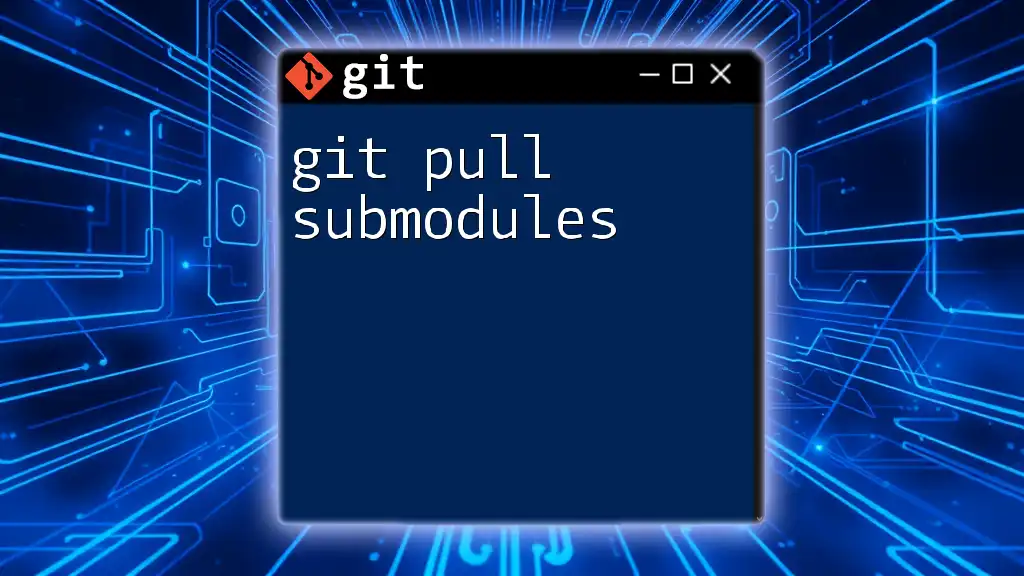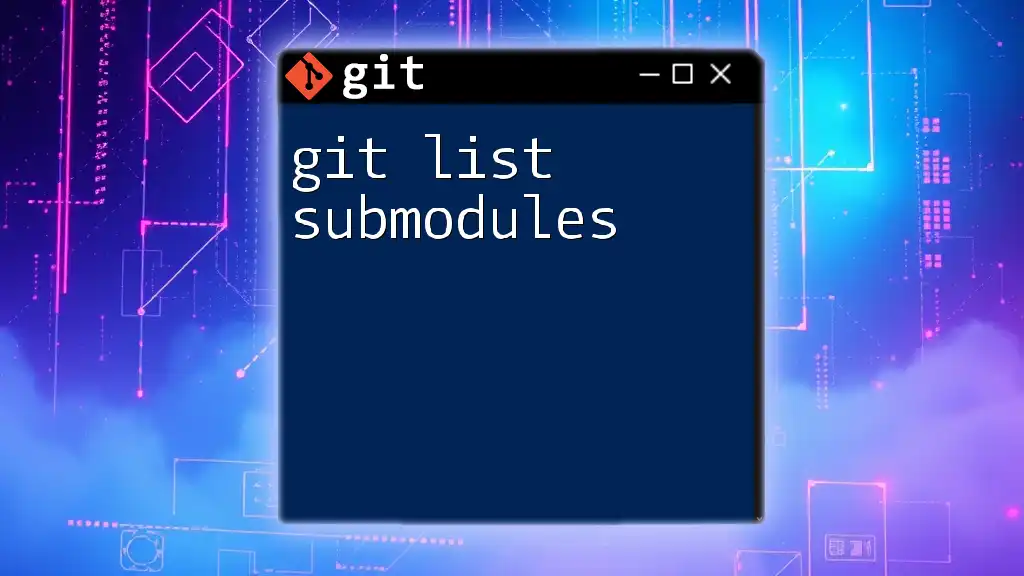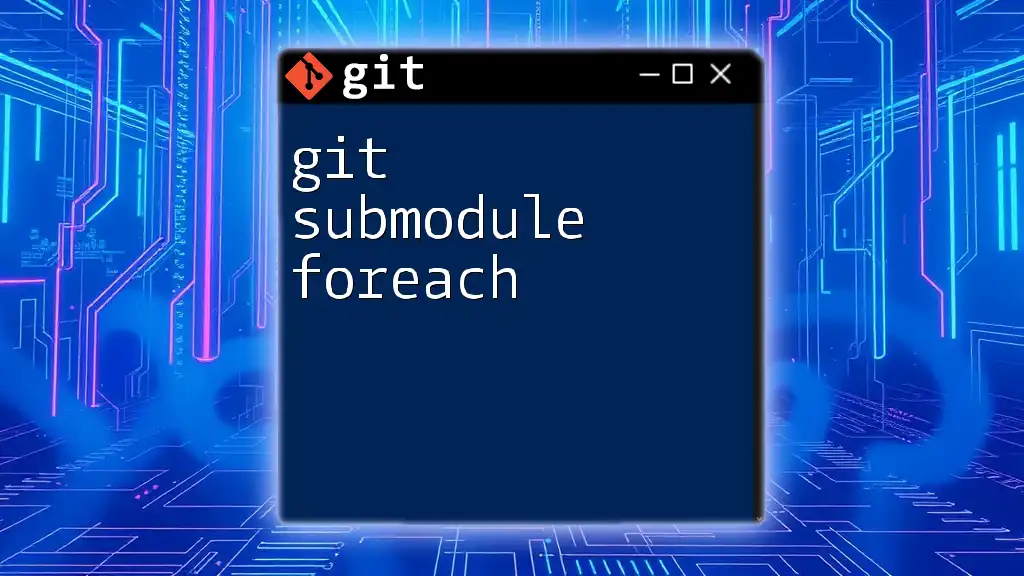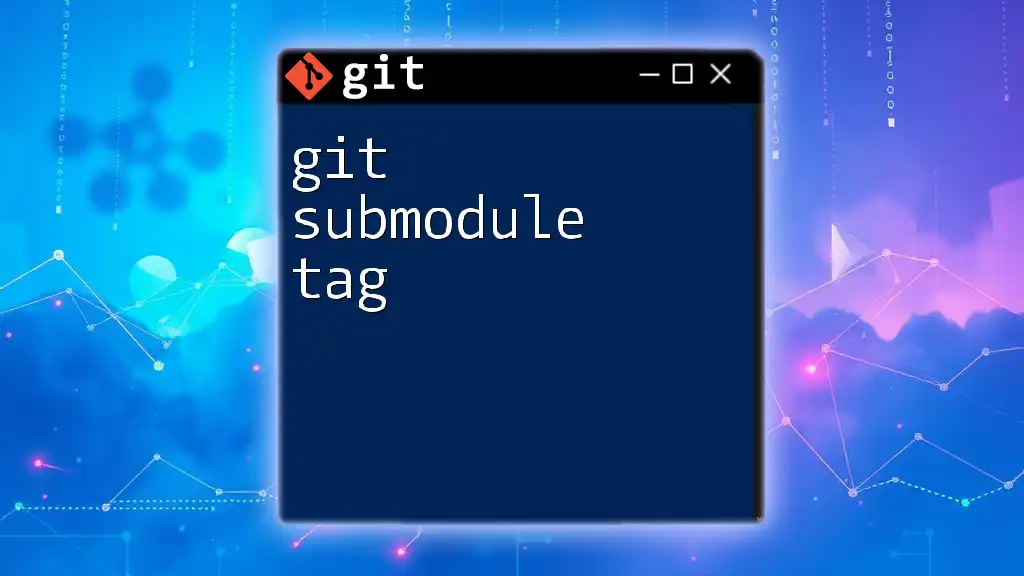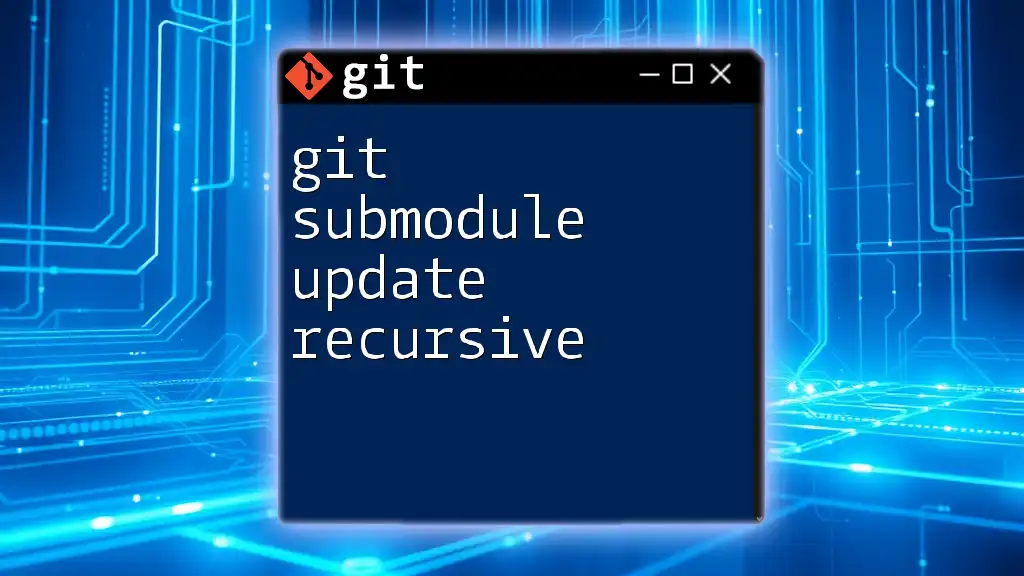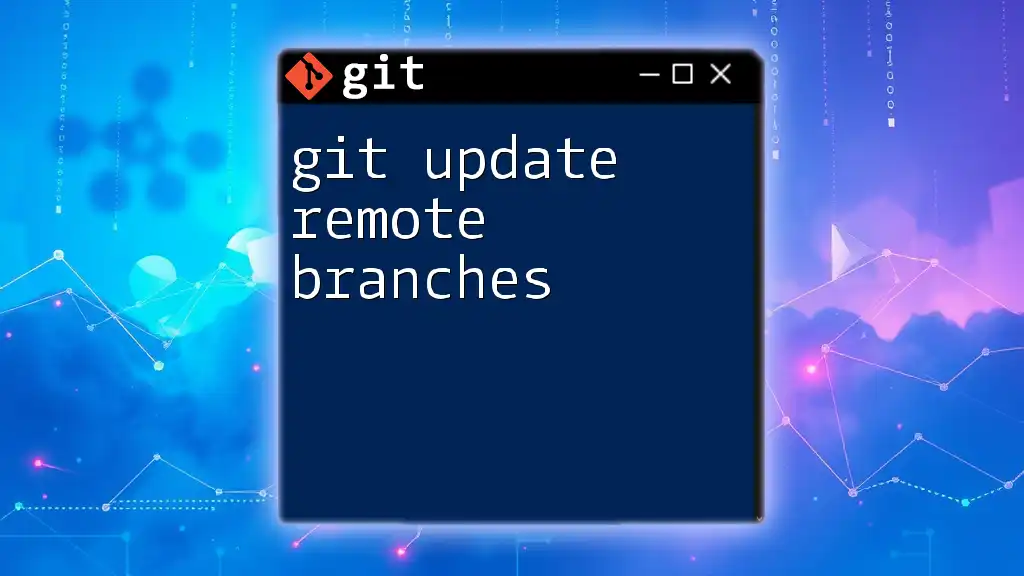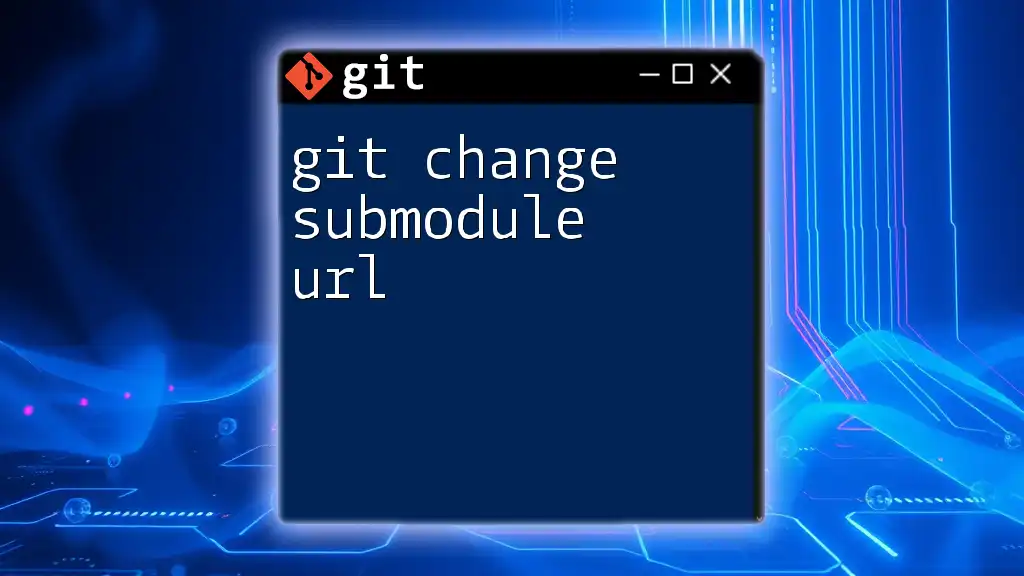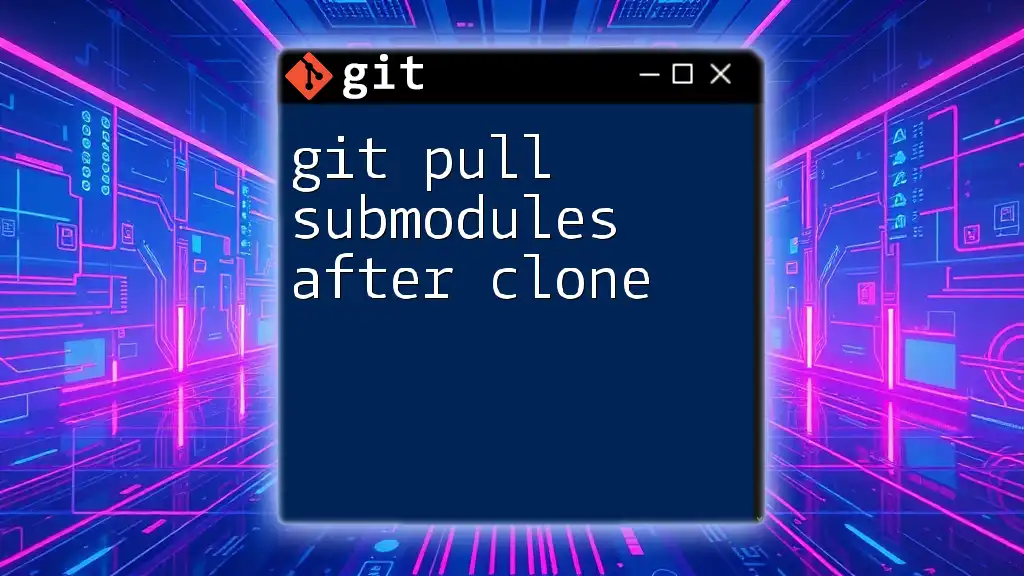To update a Git submodule to its latest commit, use the command that initializes, fetches, and checks out the submodule's latest version in one go:
git submodule update --remote --merge
Understanding Git Submodules
What are Git Submodules?
Git submodules are repositories nested inside another Git repository. They allow you to include and track external repositories as part of your main project, enabling better modularity and separation of code. This is especially useful when you want to include libraries or components that exist independently and may evolve separately from your main codebase.
How Submodules Function
Unlike regular directories in your Git repository, submodules are tracked by a specific commit from their respective repositories. This means that while the parent repository maintains a pointer to a precise commit in the submodule, the submodule itself can be independently updated. Consider the following example structure:
MyApp/
├── .git/
├── lib1/ (submodule)
├── lib2/ (submodule)
└── main.py
In this structure, `lib1` and `lib2` are submodules that can be developed and versioned separately.
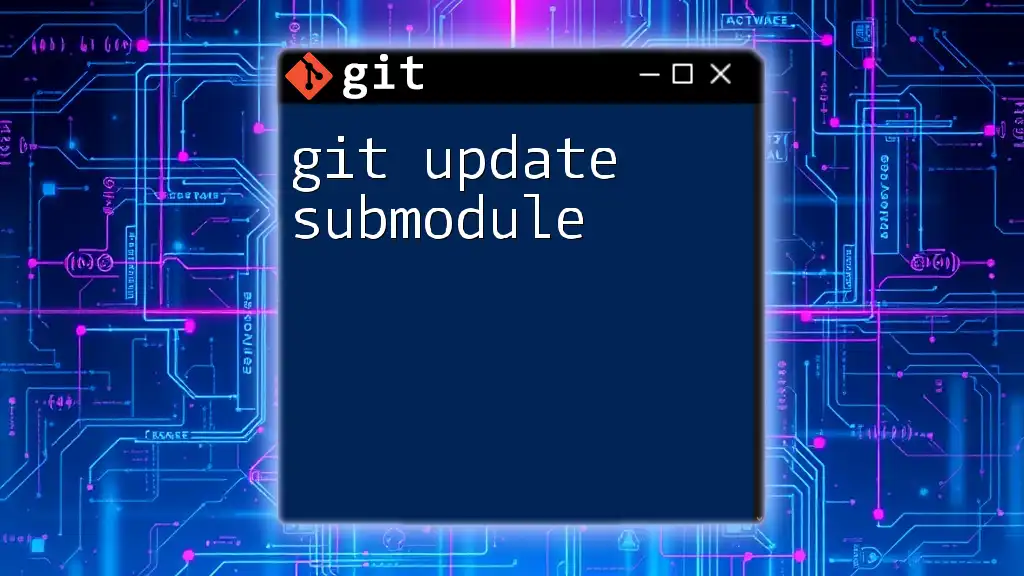
Updating Git Submodules
Why Update Git Submodules?
Keeping submodules updated is crucial for ensuring that your project benefits from the latest features and fixes provided by those external repositories. Failing to update could lead to compatibility issues or missing out on important improvements that could enhance functionality or security.
Basic Commands for Updating Submodules
Checking the Current Submodule Status
Before updating, it’s important to know the current state of your submodules. You can do this with:
git submodule status
This command will display the current commit of each submodule and whether it’s up-to-date with the main project.
Fetching Updates for Submodules
Fetching updates for your submodules can be easily accomplished with the following command:
git submodule update --remote
This command pulls changes from the configured remote repositories for each submodule to keep them in sync with their latest commits.
Updating to the Latest Commit
What is the Latest Commit?
The latest commit refers to the most recent changes made in the submodule's repository. This is critical because tracking evolving code is vital for successful project configurations.
Using Git to Update to Latest
To update your submodule to the latest commit from its upstream remote branch, you can employ the following command to fetch and checkout the latest changes:
git submodule foreach git pull origin main
This command iterates over each submodule and executes a `git pull` to fetch and incorporate changes from the `main` branch of the submodule's repository.
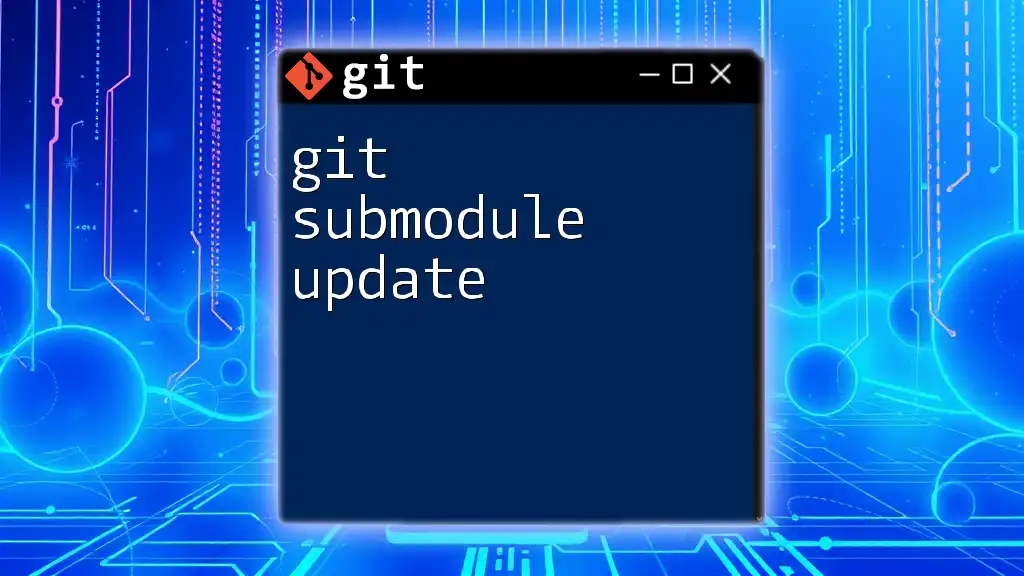
Best Practices for Managing Submodule Updates
Regular Update Schedule
Establishing a regular update schedule is a best practice that can prevent you from falling behind on the latest changes. Consider integrating submodule updates into your regular workflow—perhaps on a weekly basis or before significant releases.
Handling Conflicts in Submodules
It’s possible that conflicts may arise when submodules are updated. This usually happens if multiple team members are collaborating on the same submodule or if changes from the main repository conflict with submodule changes. Here are a few strategies for resolving such conflicts:
- Communicate: Keep open lines of communication about who is working on what to avoid overlapping changes.
- Rebase or Merge: Use `git rebase` or `git merge` as appropriate to integrate changes seamlessly.
Version Control in Submodules
Maintaining clear version control in your submodules is essential. Apply semantic versioning or tag important changes to allow easy access to previous stable versions. Additionally, document any changes in a changelog within the submodule to provide clarity to all contributors.
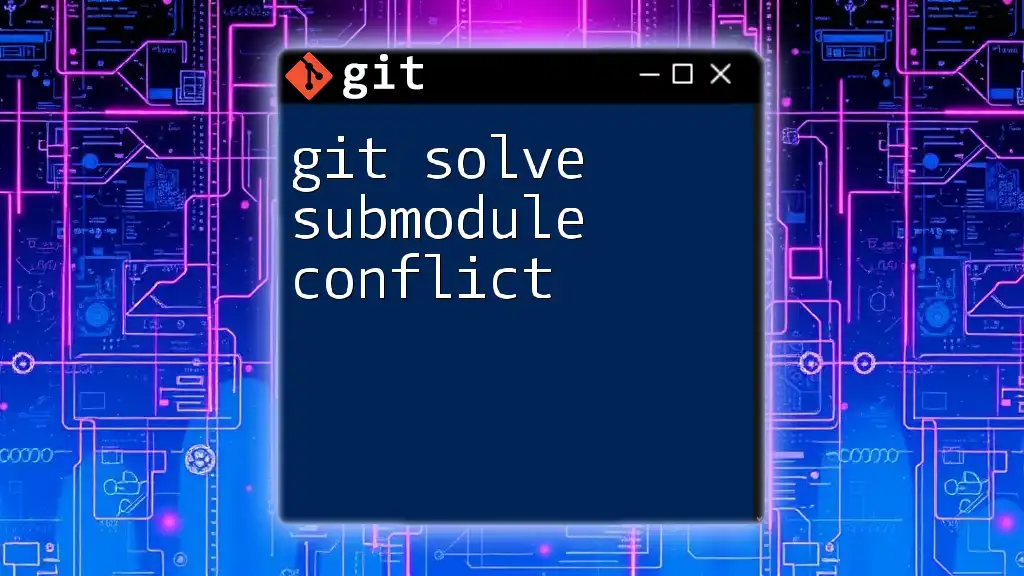
Conclusion
Updating Git submodules is an integral part of maintaining a healthy and functional project. By understanding the mechanisms behind submodules and regularly updating them, you ensure your project remains robust, secure, and up-to-date with the latest features. Embrace the power of submodules to modularize your code and work collaboratively with various libraries and tools, leading to a more efficient development process.
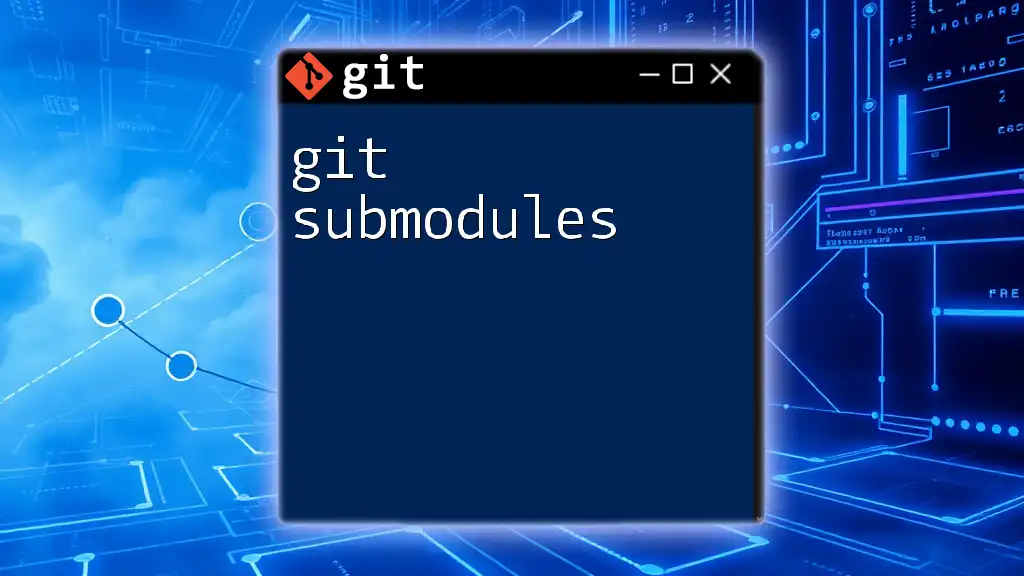
Additional Resources
Further Reading
To dive deeper into Git and submodules, explore the official Git documentation that provides comprehensive insights and examples.
Join Our Community
Become a part of the vibrant community of Git users. Engage with peers through forums, chat rooms, or dedicated social media groups to share tips, tricks, and experiences that can enhance your Git journey.

